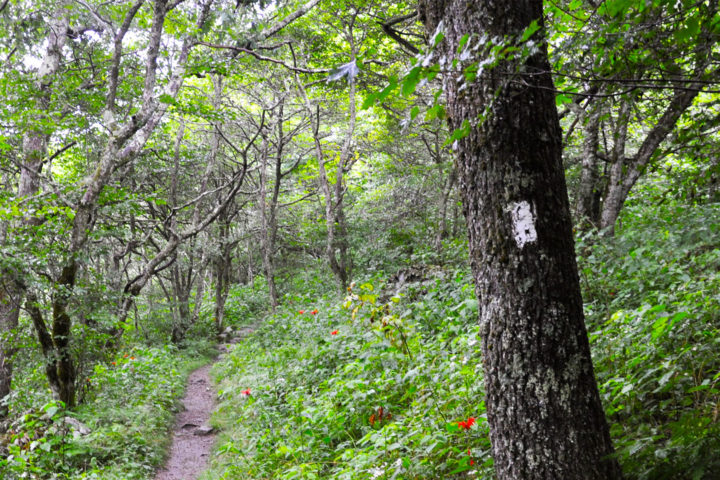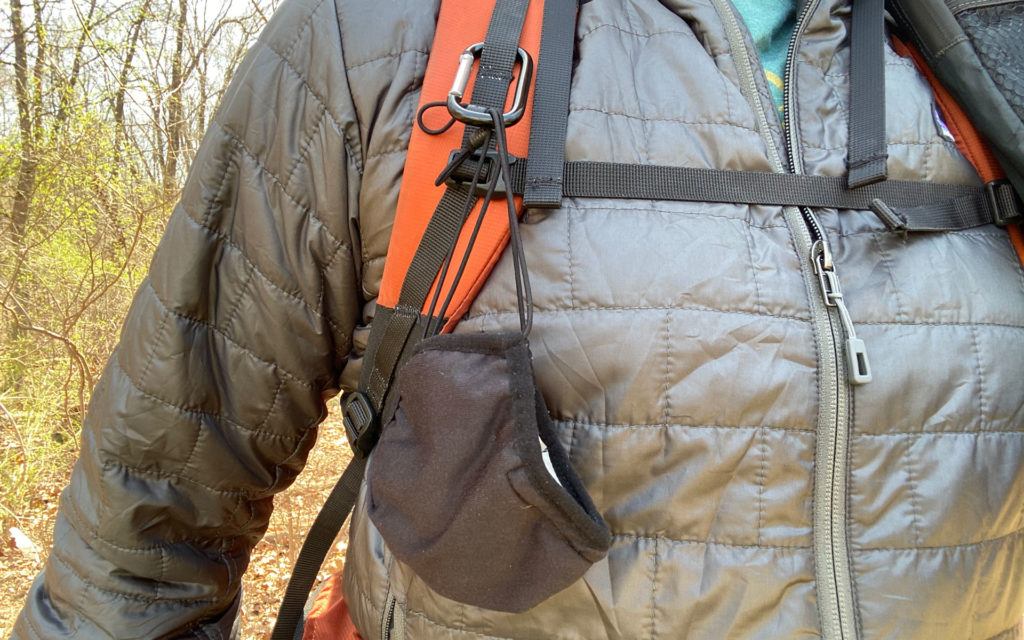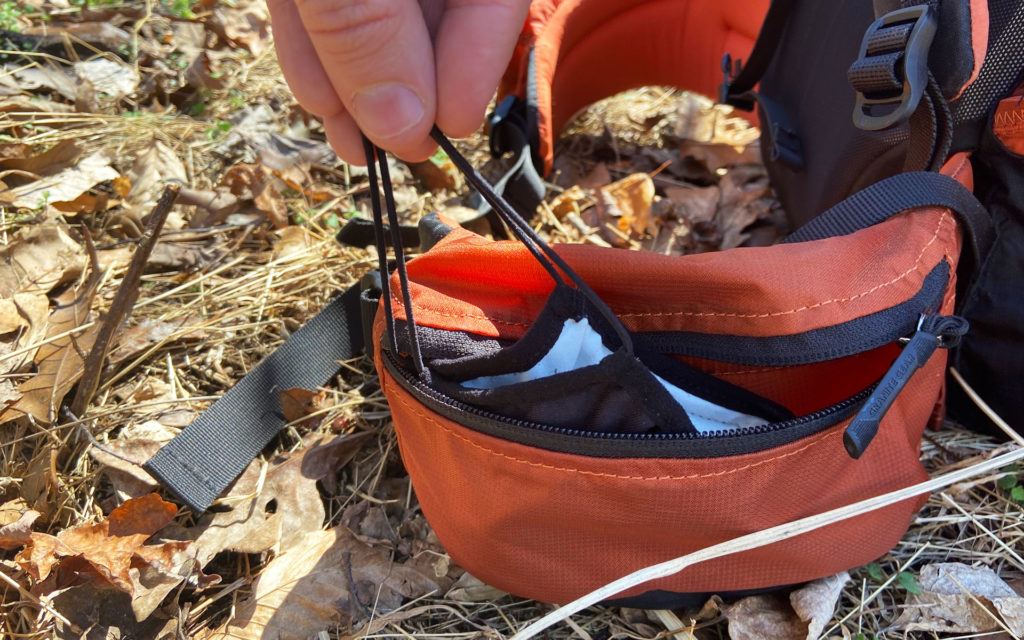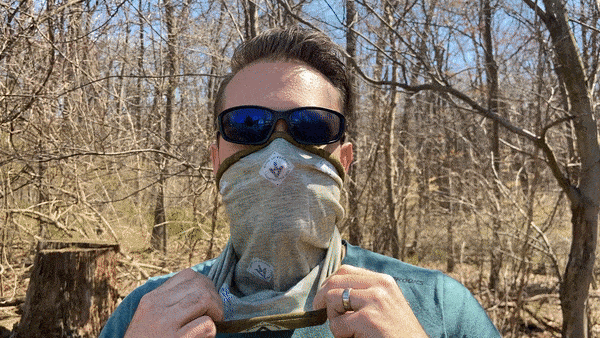By Laurie Potteiger, ATC Information Services Manager
Masks: 2021’s Essential Hiking Gear
March 26, 2021
UPDATE: May 11, 2021
With a widely available and distributed COVID-19 vaccine in the United States and the latest information from the Centers for Disease Control and Prevention (CDC), the ATC has updated its guidance for long-distance hiking and visitor centers. Long-distance hiking on the A.T. is now considered to be a safer activity, especially for those who have received one of the approved COVID-19 vaccines. The ATC 2,000-Miler Recognition Program has resumed, and A.T. 2021 hangtags will be distributed when designated A.T. visitor centers reopen. Some COVID-19 safety recommendations are still in place. For more information, visit appalachiantrail.org/covid-19.
Tent? Check. Sleeping bag? Check. Extra socks? Check. Some of the items to take on your next hiking trip may seem obvious to many Appalachian Trail (A.T.) hikers, but one essential piece of equipment should be included until the COVID-19 pandemic is under control: a mask.
Your mask should be within easy reach so that whenever you are not able to be more than six feet away from other hikers, you can quickly put one on. Some ideas include:
Clipping your mask to your shoulder strap.
Dedicating a hip belt pocket to your mask.
Choosing a mask with head straps so it can hang from your neck when not in use.
Masks are currently required on federal lands (which is most of the A.T.) when a distance of six feet cannot be reasonably maintained between others — this applies to a lot of locations on the A.T., such as crowded trailheads or overlooks, campsites, or when passing by others on a narrow section of the Trail.
Here are some tips for mask-wearing on the A.T. (and pretty much everywhere else):
Make sure your mask fits well and has multiple layers.
A mask with a nose wire or used with a brace fits best; the Centers for Disease Control and Prevention (CDC) also has tips on choosing and modifying a mask for maximum effectiveness.
Carry a spare (or two).
Have a backup mask in case you lose or drop your mask, or it gets wet, which renders it less effective. If you’ll be out for more than a few days, check out these tips from the CDC on how to wash your mask.
If you wear a neck gaiter/tube/Buff® as a mask, make sure it has two (or more) layers.
Per the CDC, using a neck gaiter, tube, etc. serves as an effective mask as long as it has two layers, which can be accomplished by folding a single-layer neck gaiter to create multiple layers.
Position your mask so you can slip it on quickly without touching the body of the mask.
You can avoid potentially contaminating yourself with coronavirus by using a mask with straps that go around the head. This type of mask allows you to let it hang from your neck when the top strap is removed and touch only the straps to slide it back in place.
Put on your mask when you see someone approaching.
You never know how close someone may get or how long you might end up chatting or hanging out with a friendly stranger.
Always wear a mask in town.
Being in town may put you in unavoidable close proximity with others, making an effective mask doubly important.
Wearing a mask protects not only you but shows that you care about the well-being of others.
Even if you have been vaccinated or have contracted the virus in the past, you may still have the potential to unknowingly transmit the virus to others who are vulnerable.
Pack it in, pack it out.
Like all other items you take with you on the Trail, follow Leave No Trace Principles and pack out any of your disposable, soiled, or broken masks.
It is the responsibility of all hikers to be self-sufficient to protect themselves from COVID-19 and prevent the spread of disease to others. So, make sure you’ve got a well-fitting mask (and a backup) on your hiking checklist. Masks weigh next to nothing, cost very little, and have the power to save lives. Plus, by wearing masks, we are all making sure that we are potentially reducing the amount of time the pandemic will continue.
Think of your mask as an ultra-lightweight shield to keep at the ready that will keep you and others safe.
For more information on how to plan and prepare for your upcoming hikes, visit our Hiker Resource Library. For the latest information on how the COVID-19 pandemic is affecting the A.T., visit appalachiantrail.org/covid-19.
Discover More

Plan and Prepare
Hiker Resource Library
A collection of resources for hikers to stay safe, healthy, and responsible on the Appalachian Trail.

Plan and Prepare
Camping on the A.T. During the Pandemic
During the COVID-19 pandemic, packing your own personal shelter is one of the most important steps for preventing the spread of the virus on the A.T.

Stay Safe on the A.T.
COVID-19 Latest Updates
Be aware of safety guidelines, local restrictions and closures, and the latest information on how COVID-19 could affect your time on the A.T.




